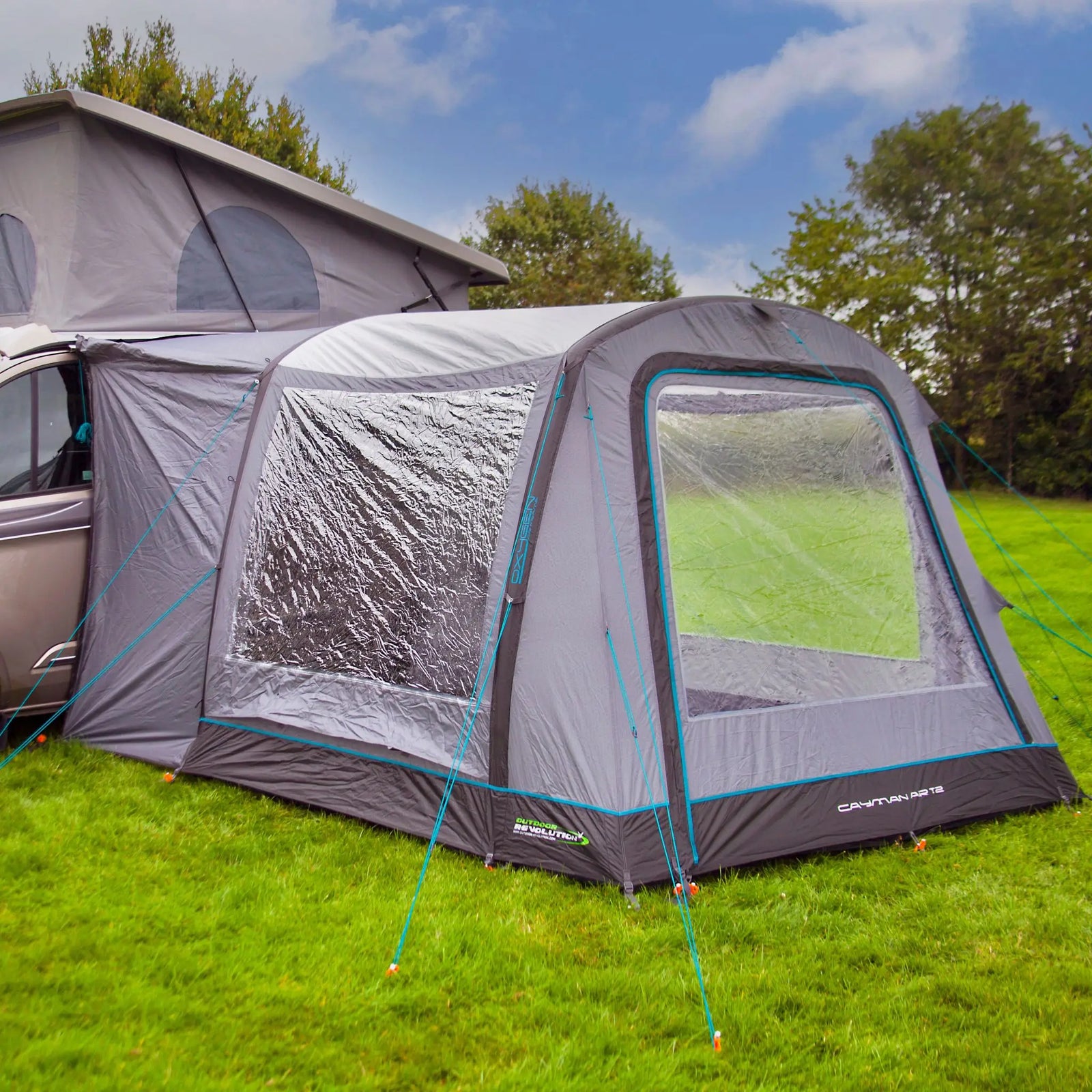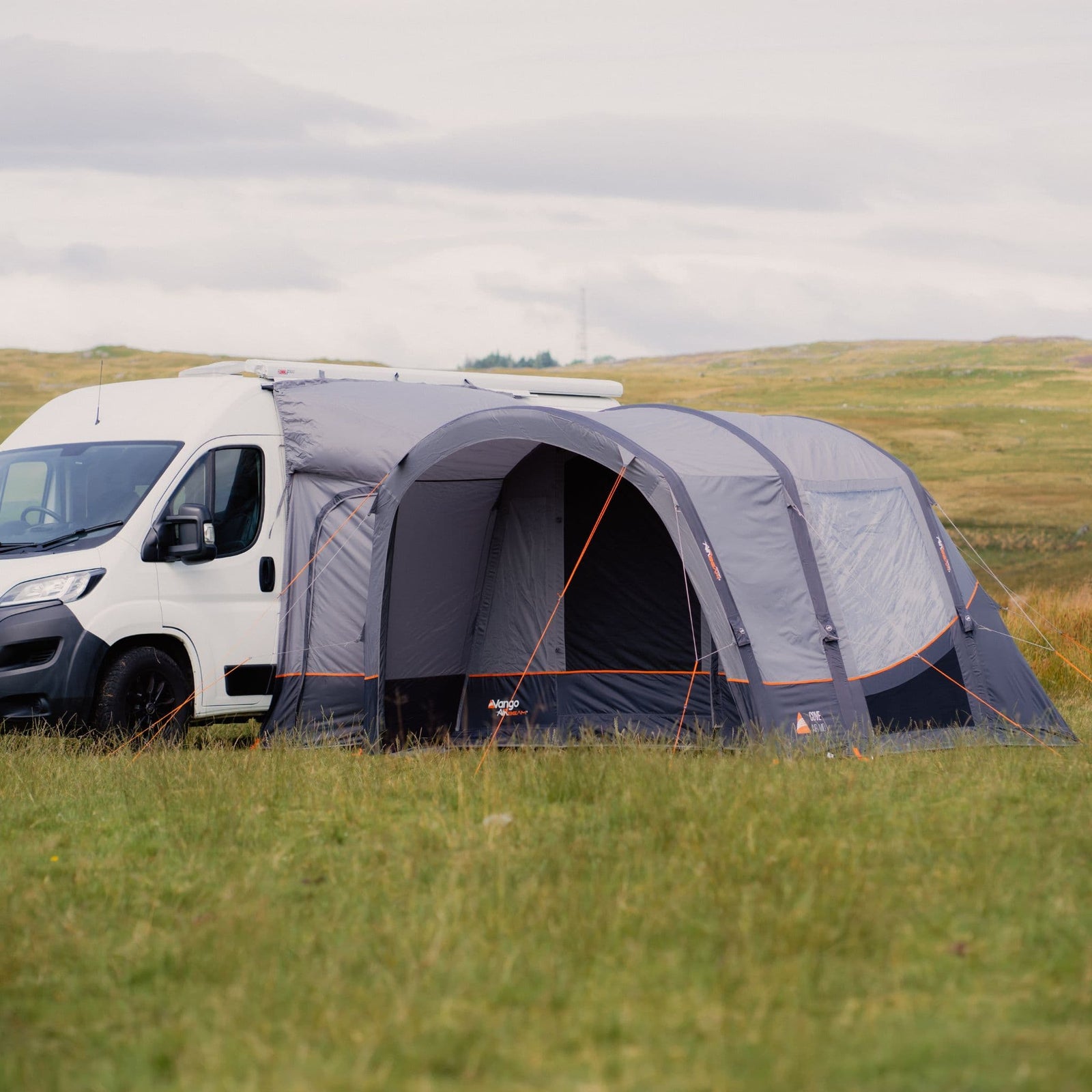
Drive away awnings are one of the most popular ways to add extra space to a campervan or motorhome. They connect directly to your vehicle but can be left standing when you drive away, giving you the flexibility to return to a ready-pitched space. At WM Camping, we stock a massive range of inflatable and poled drive away awnings from trusted names such as Vango, Outdoor Revolution and Outwell.
Whether you’re looking for a small drive away awning for weekends or a larger drive away awning for family touring, we have awnings to suit a wide range of vehicles. You can shop our drive away awnings by type, brand or attachment height to find the best match for your campervan or motorhome.
Shop By: Campervan | High Top | Motorhome | Inflatable
Vango Drive Away Awnings
At WM Camping, our Vango Drive Away Awnings range is one of the most comprehensive in the UK, offering high-quality designs built for comfort, durability, and ease of use. Perfect for campervans and motorhomes, these awnings provide valuable extra living space wherever you travel.
Featuring Vango’s trusted AirBeam technology and hard-wearing Sentinel fabrics, each model is designed for quick pitching and reliable performance in all conditions. Whether you’re after a compact awning for weekend trips or a spacious family setup, Vango delivers quality you can depend on.
Explore our full range of Vango Drive Away Awnings today and find the ideal addition to your campervan setup at great prices.
Outwell Drive Away Awnings
Discover our Outwell Drive Away Awnings collection at WM Camping, combining Scandinavian-inspired design with dependable performance for your campervan holidays.
Outwell’s range is known for its attention to detail, featuring sturdy air and poled frames, weather-resistant fabrics, and thoughtful layouts that create a comfortable living area beside your van. Ideal for both weekend getaways and extended touring, these awnings offer space and shelter wherever you pitch up.
Shop our full range of Outwell Drive Away Awnings today and find a design that fits your van and camping style.
Outdoor Revolution Drive Away Awnings
Explore our Outdoor Revolution Drive Away Awnings at WM Camping, designed for campers who value reliability and smart design.
Outdoor Revolution are known for their durable fabrics, easy-pitch inflatable frames, and clever layout options that make life on the road more comfortable. Whether you need a compact awning for short breaks or a spacious model for longer trips, there’s something in the range to suit every campervan or motorhome.
Browse our full range of Outdoor Revolution Drive Away Awnings today and find the perfect setup for your next camping trip.
Helpful Links
What is a Drive Away Awning?
Our blog explains what a drive away awning is, how it works, and why it’s a popular choice for campervans and motorhomes.
How to attach a Drive Away Awning
Read our guide on attaching a drive-away awning, from using a drive-away kit to connecting directly to your vehicle.
















































